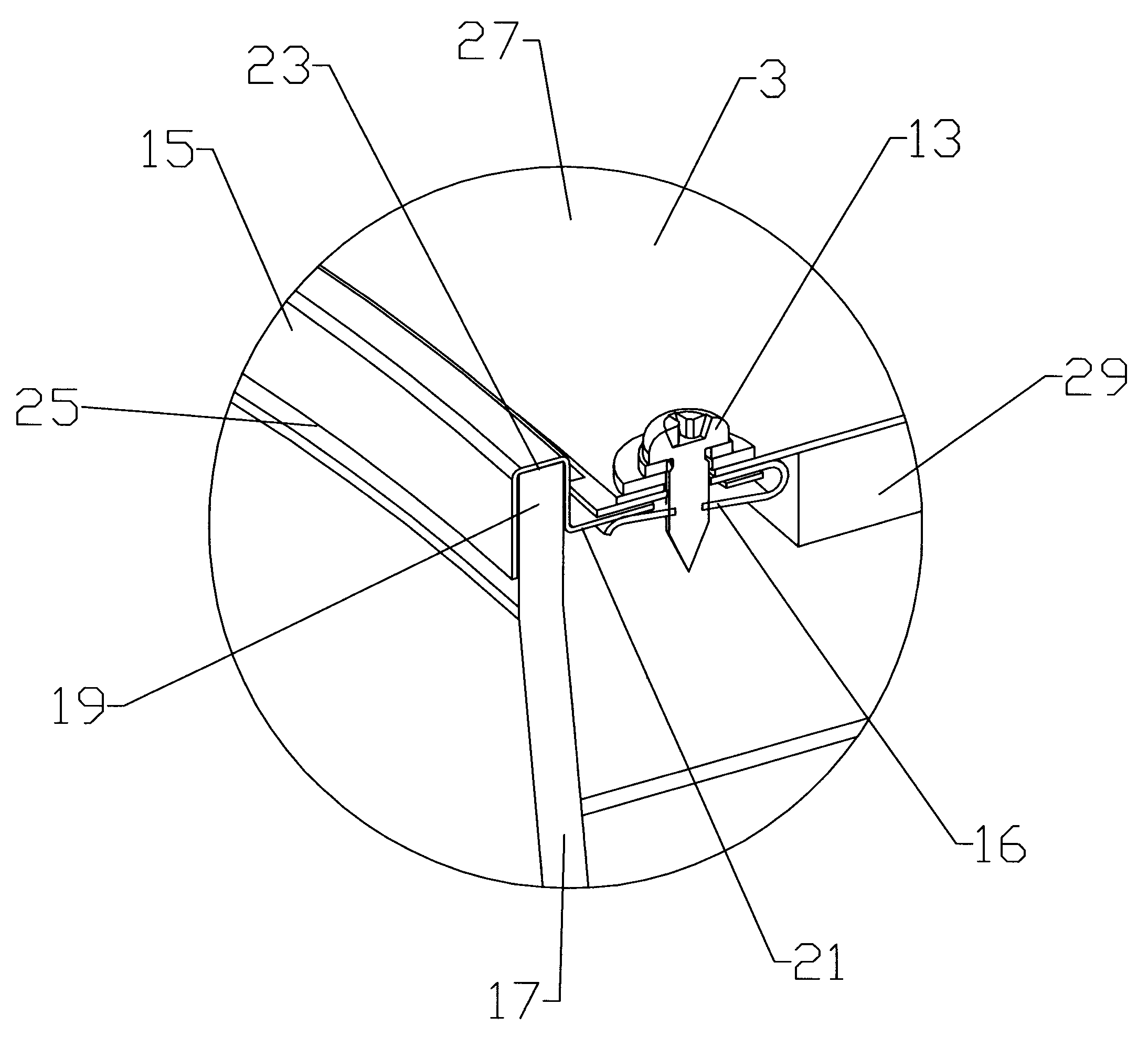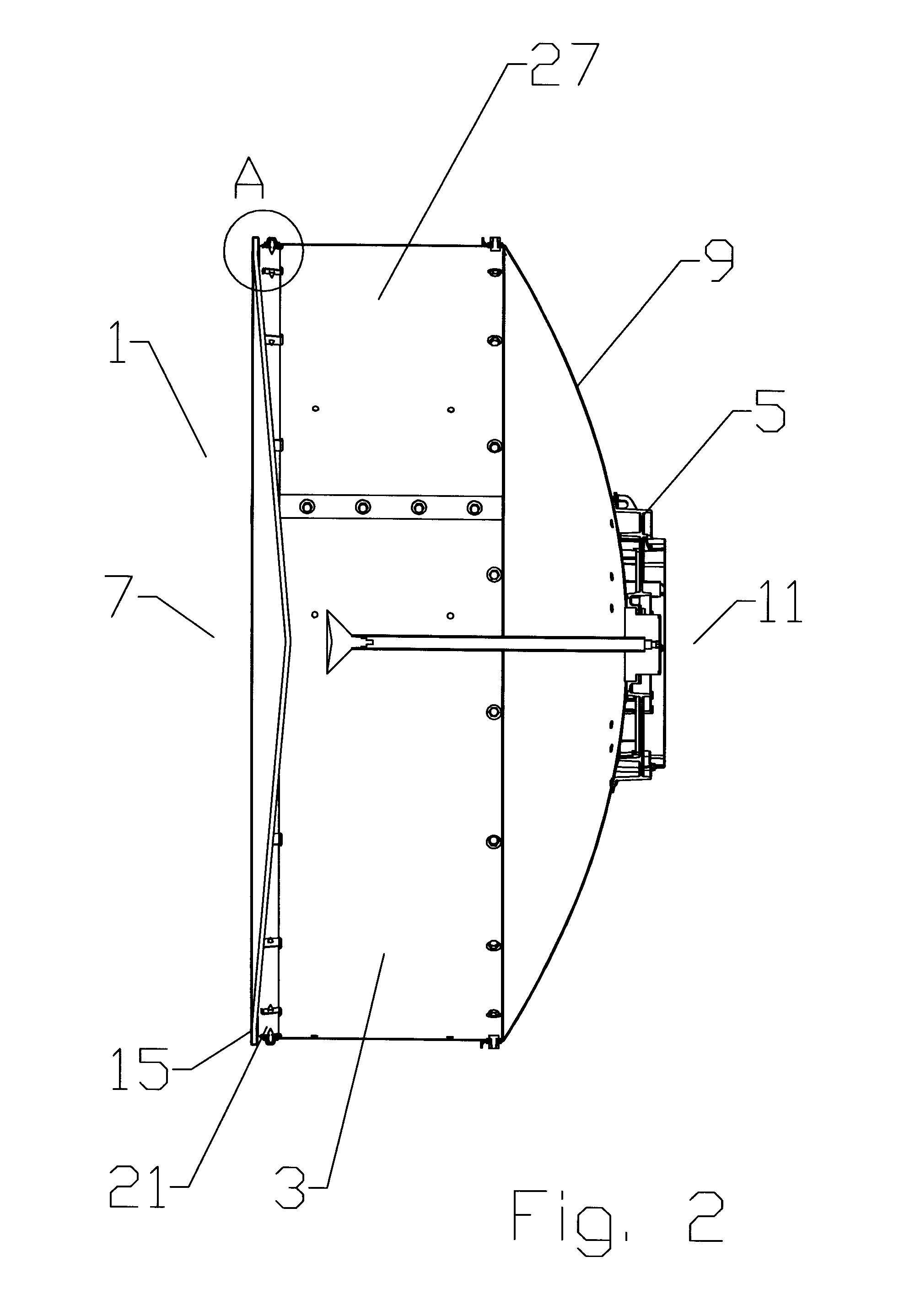Radome and shroud enclosure for reflector antenna
a reflector antenna and shroud enclosure technology, applied in the direction of antennas, antenna details, antenna couplings, etc., can solve the problems of increased manufacturing complexity and/or cost, unusable backlobes into the signal pattern of the reflector antenna, and the need for metalizing operations,
- Summary
- Abstract
- Description
- Claims
- Application Information
AI Technical Summary
Benefits of technology
Problems solved by technology
Method used
Image
Examples
Embodiment Construction
[0021]A first exemplary embodiment of a reflector antenna enclosure 1 is demonstrated in FIGS. 1-11. A cylindrical shroud 3 extends, generally coaxial with a longitudinal axis of the reflector antenna 5, from a distal end 7 of the reflector dish 9. A proximal end 11 of the shroud 3 is coupled, for example via mechanical fastener(s) 13 or the like, to the periphery of the reflector dish 9. A retaining band 15 may be coupled to an inner diameter of the shroud 3, proximate the distal end 7 of the shroud 3. A radome 17 enclosing the distal end 7 of the shroud 3 cavity is seated within a retaining groove 19 of the retaining band 15.
[0022]The retaining band 15 has a cross section best demonstrated in FIG. 3. A mounting portion 21 of the retaining band 15 is coaxial with the shroud 3, dimensioned to seat against the inner diameter of the distal end 7 of the shroud 3, fastened for example by a plurality of fastener(s) 13 each threaded into a respective clip 16 placed upon the mounting porti...
PUM
| Property | Measurement | Unit |
|---|---|---|
| inner diameter | aaaaa | aaaaa |
| outer diameter | aaaaa | aaaaa |
| diameter | aaaaa | aaaaa |
Abstract
Description
Claims
Application Information
 Login to View More
Login to View More - R&D
- Intellectual Property
- Life Sciences
- Materials
- Tech Scout
- Unparalleled Data Quality
- Higher Quality Content
- 60% Fewer Hallucinations
Browse by: Latest US Patents, China's latest patents, Technical Efficacy Thesaurus, Application Domain, Technology Topic, Popular Technical Reports.
© 2025 PatSnap. All rights reserved.Legal|Privacy policy|Modern Slavery Act Transparency Statement|Sitemap|About US| Contact US: help@patsnap.com



